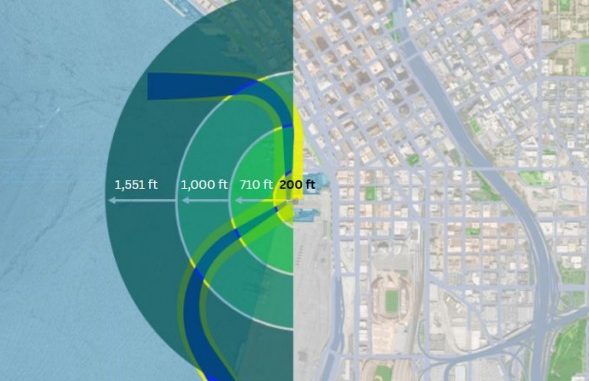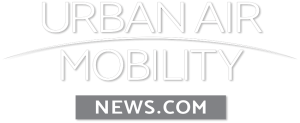
The Washington State Department for Transportation (WSDOT) has published a Vertiport Land Use Guide Supplement, providing “a framework for ensuring land use compatibility around vertiports to facilitate the safe and efficient integration of Advanced Air Mobility (AAM) operations.”
According to the report, the research presents a comprehensive framework for establishing land use compatibility guidelines tailored to vertiports serving electric Vertical Takeoff and Landing (eVTOL) aircraft in urban environments.
“Addressing significant gaps in current regulatory standards, the research systematically analyzes accident risk, noise propagation, and aerodynamic effects such as downwash and outwash, using advanced quantitative methods and AI-augmented assessments. The findings reveal that existing aviation infrastructure guidelines do not adequately account for the unique operational characteristics of eVTOLs, highlighting the need for revised zoning parameters and compatibility zones specific to vertiports. By proposing a multi-tiered safety zoning framework, the study offers precise, evidence-based recommendations that enhance safety, minimize noise impacts, and promote environmental sustainability. This work equips stakeholders with practical tools to support the safe and effective integration of advanced air mobility infrastructure into complex urban landscapes, ensuring that vertiport development aligns with community needs and urban planning best practices.”
The guide introduces three primary compatibility zones based on aircraft altitude and associated risks, alongside restrictions on land uses that could interfere with vertiport operations. It also presents compatibility tables to guide planners and policymakers in making informed decisions. The recommendations are based on research, expert consensus, and regulatory considerations, forming a foundation for future vertiport planning and integration into urban and regional transportation networks
“The data provided here was based on several academic studies with significant input from AAM, planning, regulatory, and aviation experts. The consistency between existing and proposed guidelines corroborates the recommendations of the various underlying research studies, and the findings can influence current and future land use planning initiatives. This supplement establishes a foundation for vertiport land use compatibility planning, facilitating the adoption of these essential components of AAM. In summary, this document can be a fundamental reference for integrating vertiports into communities and their transportation systems.”
For more information
https://media.licdn.com/dms/document/media/v2/D561FAQHf2K-potaTnw/feedshare-document-pdf-analyzed/B56ZanqB80GsAY-/0/1746569540491?e=1747267200&v=beta&t=dPy9LtcMyScrImAl2WDOonUb3huxIBuXAFFR7RxBvMw

